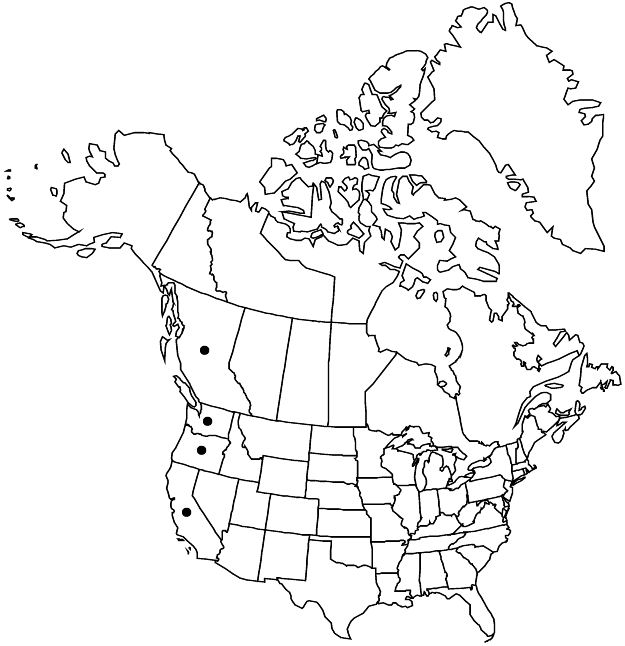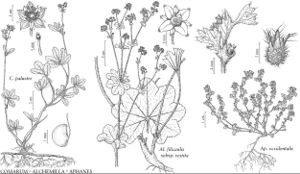Difference between revisions of "Aphanes occidentalis"
in N. L. Britton et al., N. Amer. Fl. 22: 380. 1908.
FNA>Volume Importer |
imported>Volume Importer |
||
| (One intermediate revision by the same user not shown) | |||
| Line 1: | Line 1: | ||
{{Treatment/ID | {{Treatment/ID | ||
|accepted_name=Aphanes occidentalis | |accepted_name=Aphanes occidentalis | ||
| − | |accepted_authority=(Nuttall) Rydberg | + | |accepted_authority=(Nuttall) Rydberg |
|publications={{Treatment/Publication | |publications={{Treatment/Publication | ||
|title=in N. L. Britton et al., N. Amer. Fl. | |title=in N. L. Britton et al., N. Amer. Fl. | ||
| Line 45: | Line 45: | ||
-->{{#Taxon: | -->{{#Taxon: | ||
name=Aphanes occidentalis | name=Aphanes occidentalis | ||
| − | |authority=(Nuttall) Rydberg | + | |authority=(Nuttall) Rydberg |
|rank=species | |rank=species | ||
|parent rank=genus | |parent rank=genus | ||
| Line 59: | Line 59: | ||
|publication year=1908 | |publication year=1908 | ||
|special status=Illustrated | |special status=Illustrated | ||
| − | |source xml=https:// | + | |source xml=https://bitbucket.org/aafc-mbb/fna-data-curation/src/2e0870ddd59836b60bcf96646a41e87ea5a5943a/coarse_grained_fna_xml/V9/V9_507.xml |
|subfamily=Rosaceae subfam. Rosoideae | |subfamily=Rosaceae subfam. Rosoideae | ||
|tribe=Rosaceae tribe Potentilleae | |tribe=Rosaceae tribe Potentilleae | ||
Latest revision as of 22:57, 5 November 2020
Plants slender, sparsely to densely hairy, hairs less than 1 mm. Stems erect or ascending, simple or branched from base, 1–10(–15) cm. Leaves 3–9 mm; stipules overlapping only distally, 2–3(–4) mm, lobes on distal nodes ovate, length 2/3–1 times undivided portion; petiole free from stipules in proximal leaves, adnate in distal ones; blade 2–5 mm, divided ca. 1/3 length, each segment 4–6-lobed, ovate, length 1.8–3 times width. Inflorescences opposing leaves, open, flowers tending to become exposed. Pedicels to 2 mm. Flowers 0.5–2 × 0.7–1.1 mm, 1–1.5 mm in fruit; epicalyx bractlets 0–0.5 mm; hypanthium ovoid to globose, contracted or not at apex, faintly ribbed; sepals connivent to spreading, 0.2–0.6 mm, ciliate. Fruits 0.8–1 mm.
Phenology: Flowering Mar–Jun.
Habitat: Vernally moist grasslands, chaparral, woodlands, clearings, rocky outcrops, cliffs, sandy beaches, waste ground, roadsides
Elevation: 0–1200 m
Distribution

B.C., Calif., Oreg., Wash., Mexico (Baja California).
Discussion
Three races of Aphanes occidentalis are recognizable, apparently corresponding to previously described species. Some apparently intermediate plants exist, and not all specimens can be confidently assigned to these races, which are, therefore, not recognized as formal taxa here. The names under which they have been recognized and their distinguishing features and distributions are as follows:
Aphanes cuneifolia (Nuttall) Rydberg: hypanthium and calyx ovoid, 1 mm, smooth, often subglabrous; hypanthium contracted at apex, not densely hairy; epicalyx bractlets often present; sepals erect-connivent, 0.3–0.4 mm, 1/4–1/3 flower length. California; Mexico (Baja California).
Aphanes macrosepala Rydberg: hypanthium not contracted at apex, usually densely hairy, hairs spreading; epicalyx bractlets present; sepals spreading-erect, 0.5 mm, ca. 1/3 flower length. California, Oregon, Washington.
Aphanes occidentalis in the narrow sense: hypanthium and calyx ellipsoid, 1.5 mm, ± ribbed, sparsely short-hairy; hypanthium contracted at apex, not densely hairy; epicalyx bractlets usually absent; sepals usually connivent, 0.3–0.4 mm, 1/4–1/3 flower length. British Columbia; California, Oregon, Washington.
Selected References
None.
